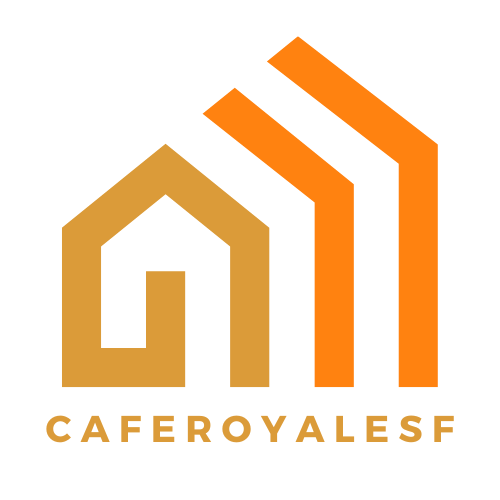Teaching might not come with a hefty paycheck, but that doesn’t mean teachers can’t dream big—like owning a cozy home filled with all those “World’s Best Teacher” mugs. Unfortunately, the down payment often feels like an insurmountable mountain. Enter down payment support programs, the unsung heroes ready to swoop in and save the day (cape optional).
Table of Contents
ToggleOverview of Down Payment Support for Teachers
Down payment support programs provide essential financial assistance for teachers striving to purchase homes. Programs like the Teacher Next Door initiative offer benefits that specifically cater to educators. These initiatives often encompass grants, forgivable loans, and low-interest mortgages.
Many state and local governments recognize the value of supporting teachers in their homeownership quests. Additional programs include the Federal Housing Administration (FHA) loans, which require lower down payments compared to conventional loans. Eligibility criteria for each program vary, but many programs cater specifically to first-time homebuyers, ensuring access for teachers.
Targeted support focuses on addressing unique financial constraints teachers experience. With average salaries around $56,000 as reported by the National Education Association, many educators struggle to save the necessary down payment. Data from various housing studies highlight that a substantial number of teachers find saving even 3-5% of a home’s purchase price challenging.
Access to down payment assistance can significantly reduce the financial burden on teachers. By lowering upfront costs, these programs make homeownership more achievable, allowing educators to invest in their communities. Success stories abound, as many teachers don’t only benefit from financial support but also gain stability and pride in owning a home.
Participation in these programs requires awareness and initiative. Information sessions and workshops hosted by various organizations can empower teachers to learn about their options. Many resources are readily available online and through educational institutions, making it simpler for teachers to discover programs suited to their needs.
Types of Down Payment Assistance Programs

Several down payment assistance programs exist to support teachers in their quest for homeownership. These programs range from federal initiatives to state-specific efforts aimed at alleviating financial burdens.
Federal Programs
Federal programs, like the Teacher Next Door initiative, offer valuable resources for educators. Participants in this program can receive significant grants or forgivable loans to help with down payments. Federal Housing Administration loans present additional options, requiring lower down payments, typically around 3.5%. Many teachers can access these resources, making homeownership more attainable even with average salaries around $56,000. Programs like this strive to lighten financial responsibilities, facilitating a smoother path to owning a home.
State-Specific Initiatives
State-specific initiatives deliver tailored support for teachers in various regions. Each state implements programs designed to address local housing market conditions and teacher financial needs. For instance, some states provide down payment assistance loans with favorable terms, including low-interest rates and deferred payments. Local housing authorities may also sponsor workshops to connect teachers with available resources. Many educators benefit from these state-driven efforts, which promote homeownership and foster community investment among teachers.
Benefits of Down Payment Support for Teachers
Down payment support programs provide critical financial assistance for teachers, overcoming barriers to homeownership. These programs not only reduce stress but also enhance stability for educators.
Financial Relief
Financial relief is a key benefit of down payment support. Many teachers struggle to save for down payments, often needing 3-5% of a home’s purchase price. Access to grants and forgivable loans simplifies this challenge. Programs like the Teacher Next Door initiative offer direct funding, alleviating financial worries. With resources available through federal housing initiatives, teachers can secure homes without the burden of hefty upfront costs. By reducing initial expenses, these programs allow educators to allocate their limited salaries towards other essentials.
Encouraging Homeownership
Encouragement of homeownership represents another significant advantage of down payment support. Many teachers express a strong desire to settle in the communities they serve. Access to down payment assistance fosters this commitment, facilitating stable living environments. Programs tailored for educators make homeownership achievable, even for those earning average salaries around $56,000. Teachers experience not just financial stability but also personal pride from owning homes. By investing in communities, they create lasting positive impacts, reinforcing the connection between educators and the neighborhoods they nurture.
Challenges and Considerations
Teachers face several challenges when seeking down payment support for homeownership. Understanding eligibility requirements proves essential for educators to access available programs.
Eligibility Requirements
Eligibility criteria vary based on specific programs. Many initiatives prioritize full-time teachers, requiring proof of employment with a qualifying educational institution. Some programs limit assistance to first-time homebuyers, while others may set income limits to ensure support reaches those who need it most. Applicants might need to complete pre-purchase education courses to gain insights into financial responsibilities. Verification of residency in the community where they intend to buy a home often forms a key aspect of eligibility.
Program Limitations
Program limitations can affect access to necessary resources. Funding availability often depends on local budgets and can vary year to year. Many programs impose caps on the assistance amount, which can restrict the extent of help available for down payments. Certain grants and loans may include stipulations on property types or location, narrowing options for potential homeowners. Additionally, financing terms may include specific repayment conditions that buyers must meet. These limitations necessitate careful consideration by teachers before committing to a particular program.
Down payment support for teachers plays a crucial role in making homeownership a reality. By providing financial assistance through grants and low-interest loans, these programs help alleviate the burden of saving for a down payment.
Teachers can find stability and pride in owning a home, which strengthens their connection to the communities they serve. With various state and federal initiatives available, educators have valuable resources at their fingertips.
Being proactive in exploring these options can lead to significant benefits. As teachers navigate the eligibility requirements and program specifics, they can unlock opportunities that pave the way for a brighter future in their own homes.







